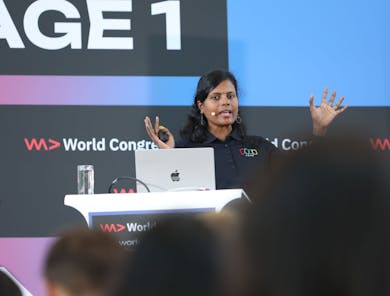No matter what kind of project you are working on, the principal mission of any web development assignment is always the same: to provide end-users with the best experience possible. When it comes to optimizing end-user satisfaction, however, it can be easy to overlook one of the most fundamental principles in web development, that your designs must be fully accessible to all end-users, regardless of their needs or abilities.
What is web accessibility and why does it matter?
Web accessibility, as the term suggests, refers simply to the creation of online content that offers end-users with impairments a content experience equivalent to that of an able-bodied end-user. This means that websites, web pages, and similar online content will be fully functional and engaging for all audiences, regardless of how the content is accessed or material is consumed.
In our increasingly digitized world, the importance of web-accessible design cannot be overstated. Now more than ever, people use the internet to conduct the business of daily life. Increasingly, they turn to the internet for work, education, shopping, banking, socializing, and entertainment.
If an end-user has a physical, sensory, or cognitive impairment that limits their ability to access online content, then that means that their overall quality of life, almost inevitably, is going to be limited as well.
However, end-users with impairments are not the only ones who will be harmed by inaccessible design — so, too, will the businesses that created the inaccessible design in the first place. When a company’s target audience endeavors to access its online content, only to find that the material is presented in a non-compatible format, they’re going to be more than simply dissatisfied. They’re likely to feel ignored, forgotten, misunderstood, or perhaps worst of all, disrespected by the organization.
This dissatisfaction can lead to increased acquisitions from customers and the profound diminishment of the brand. It may even result in litigation and fines, particularly if a company is found violating accessibility laws, such as those outlined by the Americans with Disabilities Act (ADA) or the European Union’s Web Accessibility Directive.
Accessibility and user focus
Whether you are an in-house web developer tasked with creating and maintaining a robust digital presence for your employer’s company or you’re an independent contractor developing websites and other online content for a diverse clientele, your priority, first and foremost, is the end-user.
After all, you’ll never serve the company’s needs if you can’t bring customers to its web page and keep them there. Creating accessible content means that you have already deeply considered the needs, goals, requirements, and expectations of the end-user.
To be sure, achieving this goal is no mean feat, particularly given the size and scope of the online audience. You will almost assuredly find yourself designing and modifying content to address a wide array of accessibility needs.
This is likely to involve, at a minimum, the following processes:
- Providing transcripts and closed captioning so that viewers with hearing impairments can access audio and video files;
- Proving alt-text for images to ensure that pages are fully compatible with screen readers;
- Using formatting principles that make pages easier to navigate and content easier to understand for users with cognitive impairments.
The benefits of accessible design training
Because the magnitude of any accessible design project can quickly become overwhelming if you don’t have a reasonable strategy in place, training courses in accessible design can be particularly helpful for web design and development teams. These courses provide the fundamental knowledge required to understand the types of access requirements end-users are likely to present. They also train developers in best practices for efficiently and effectively meeting these requirements.
Simply put, accessible design training transforms an abstract and often intimidating mission into a clear, concrete, and manageable goal. It provides a rubric for making the formidable achievable.
Even if you are not ready to take the step of enrolling in an accessible design course, there are still several highly effective tools and strategies that you can use to promote accessibility and ensure end-user satisfaction. Workflow diagrams, for instance, can help you identify and define the gamut of potential end-user accessibility needs and the processes required to fulfill them all.
By visualizing the workflow in this way, you’re not just segmenting and sequestering each accessibility target (i.e. creating one process for addressing the needs of colorblind users and another for addressing the needs of those with mobility impairments). Rather, this visual tool enables you to conceptualize how all the accessibility elements work together in your end design to form a cohesive whole. The result should be a more seamless, functional, and satisfying experience for all users, regardless of their ability status.
The takeaway
Web development, no matter the particular industry or project is, above all, about providing a stellar experience for the end-user — the kind of experience that gets results in terms of clicks and conversions. Accessible design is perhaps one of the most important, but often the least considered, tools for optimizing user satisfaction, and in turn, driving business growth and cultivating an exceptional business brand.










